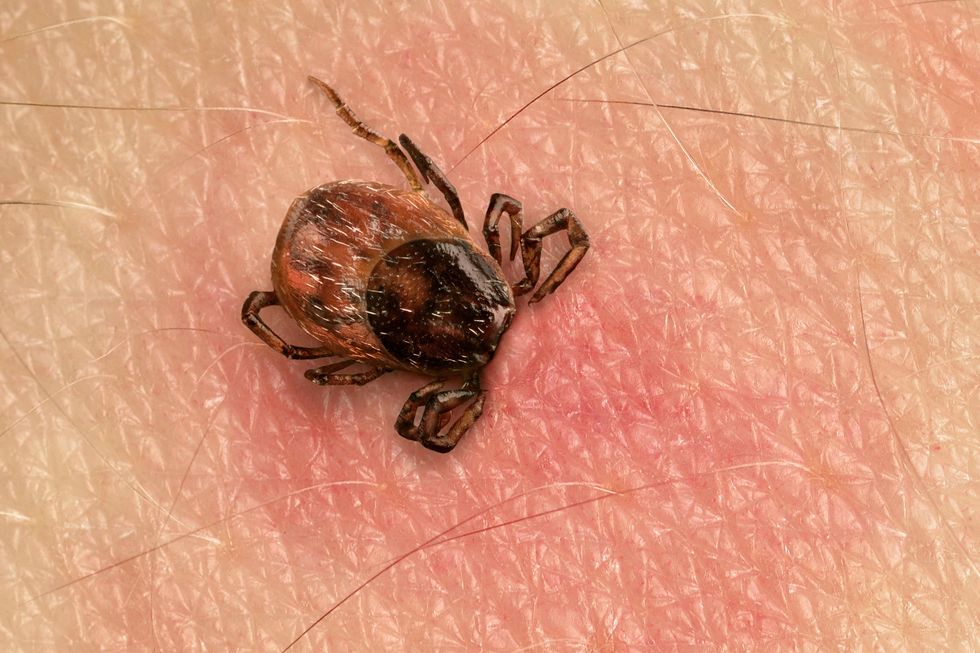Ticks: Symptoms, Causes, Treatment
What are the symptoms of tick infestation?
Tick infestations can be challenging to detect, especially in the early stages. Here are some common symptoms that may indicate a tick infestation:
- Visible ticks: The most obvious sign of a tick infestation is actually seeing ticks on your body, pets, or in your home.
- Itching and irritation: Tick bites can cause itching, redness, and irritation at the site of the bite.
- Rash: Some people may develop a rash after being bitten by a tick. The rash may be circular and expand over time, similar to a bull’s-eye pattern, which can be a sign of Lyme disease.
- Fever: In some cases, tick bites can cause fever, especially if the tick is carrying a disease such as Lyme disease.
- Joint pain: Tick-borne diseases like Lyme disease can cause joint pain and swelling, especially in the knees.
- Flu-like symptoms: Tick-borne diseases can also cause symptoms such as fatigue, headache, muscle aches, and fever, similar to the flu.
- Neurological symptoms: In severe cases, tick-borne diseases can cause neurological symptoms such as paralysis, numbness, and confusion.
If you suspect a tick infestation or have been bitten by a tick and are experiencing any of these symptoms, it’s important to seek medical attention from a healthcare provider promptly. Tick-borne diseases can be serious if not treated early.
What are the causes of tick infestation?
Tick infestations occur when ticks establish a population in an area and begin to feed on hosts, such as humans, pets, or wildlife. Several factors can contribute to the development of a tick infestation:
- Environment: Ticks thrive in wooded and grassy areas, especially where there is dense vegetation and leaf litter. These environments provide ticks with the humidity and shelter they need to survive.
- Host animals: Ticks rely on host animals, such as deer, rodents, birds, and domestic animals, to feed and reproduce. Areas with a high density of host animals are more likely to experience tick infestations.
- Climate: Ticks are most active in warm, humid environments. Climate conditions that are favorable for tick survival, such as mild winters and early springs, can contribute to tick infestations.
- Human activities: Outdoor activities that bring humans into contact with tick habitats, such as hiking, camping, and gardening, can increase the risk of tick bites and infestations.
- Lack of control measures: Failure to implement tick control measures, such as regular landscaping to reduce tick habitat, use of tick repellents, and regular tick checks, can contribute to tick infestations.
Tick infestations can be challenging to control once established, so it’s important to take preventive measures to reduce the risk of tick bites and infestations.
What is the treatment for tick infestation?
Treating a tick infestation involves removing ticks from the environment and preventing further infestations. Here are some steps to treat a tick infestation:
- Remove ticks from pets: Use fine-tipped tweezers to grasp the tick as close to the skin’s surface as possible and pull upward with steady, even pressure. Clean the bite area and your hands with rubbing alcohol, an iodine scrub, or soap and water.
- Remove ticks from your home: Vacuuming can help remove ticks from carpets, rugs, and upholstery. Wash bedding, clothing, and any other items that may have come into contact with ticks in hot water.
- Treat pets with tick prevention products: Use tick prevention products recommended by your veterinarian, such as spot-on treatments, oral medications, or tick collars, to prevent future infestations.
- Treat outdoor areas: Keep grass and vegetation trimmed, remove leaf litter, and create a barrier between wooded areas and your yard to reduce tick habitat. Consider using acaricides (tick-killing chemicals) in areas with high tick activity, but be cautious as these can be harmful to humans and pets.
- Protect yourself: When outdoors in tick-infested areas, wear long sleeves, pants, and closed-toe shoes. Use insect repellents that contain DEET or permethrin on exposed skin and clothing.
- Monitor for signs of illness: Watch for signs of tick-borne illnesses, such as fever, rash, or flu-like symptoms, and seek medical attention if you develop symptoms after a tick bite.
If you suspect a severe infestation or if you are unable to control the infestation on your own, consider contacting a pest control professional for assistance.
How do I remove a tick from myself?
To remove a tick safely and effectively, follow these steps:
- Use fine-tipped tweezers: Grasp the tick as close to the skin’s surface as possible. Avoid squeezing the tick’s body, as this can cause it to release more saliva and increase the risk of transmitting pathogens.
- Pull upward with steady, even pressure: Pull the tick upward with a steady, even pressure. Do not twist or jerk the tick, as this can cause the mouthparts to break off and remain in the skin.
- Clean the bite area: After removing the tick, clean the bite area and your hands with rubbing alcohol, an iodine scrub, or soap and water.
- Dispose of the tick: Dispose of the tick by placing it in a sealed bag or container, wrapping it tightly in tape, or flushing it down the toilet. Do not crush the tick with your fingers.
- Monitor for signs of illness: Watch for signs of tick-borne illnesses, such as fever, rash, or flu-like symptoms, in the days and weeks following the tick bite. If you develop symptoms, seek medical attention promptly.
It’s important to remove ticks as soon as possible to reduce the risk of disease transmission. If you are unsure about how to remove a tick or if you are unable to remove the tick completely, seek medical attention from a healthcare provider.




